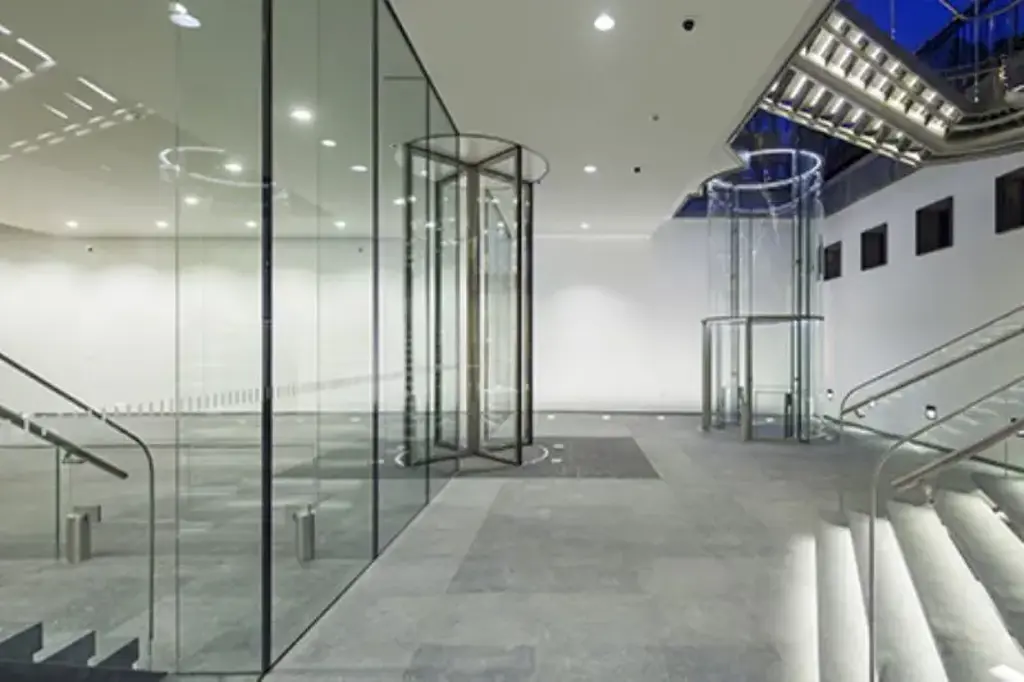Mauritshuis
Description
Het Mauritshuis is met zijn schilderijen zoals het Meisje met de Parel van Johannes Vermeer en de Anatomische les van Rembrandt, een belangrijke toeristische trekpleister in Den Haag. In opdracht van Stichting Koninklijk Kabinet van Schilderijen Mauritshuis Den Haag, ontwierp Hans van Heeswijk architecten een gecompliceerde, ondergrondse doorgang. Door het Mauritshuis te verbinden met een tegenoverliggend pand werd de oppervlakte van het museum verdubbeld.
Het museum is gelegen in een historische, binnenstedelijke en politiek belangwekkende omgeving. Dit maakt ondergronds bouwen zeer complex en is zorgvuldigheid gewenst. ABT heeft de nieuwste ontwerptechnieken toegepast om ondergronds bouwen mogelijk en haalbaar te maken.
Ondergrondse doorgang
De aanleg van de verbinding tussen de ondergrondse foyer en het naastgelegen pand was een complexe en spectaculaire onderneming. Verantwoordelijk ontwerper ABT en aannemer Volker Staal en Funderingen pasten tal van complexe technieken toe. Voor de wanden is er gebruik gemaakt van cutter soil mixing: de aanwezige grond is ter plekke met water en cement vermengd voor een grond- en waterwerende wand. Ook zijn jetgroutkolommen, softgelmassieven en vezelversterkt onderwaterbeton toegepast, evenals de techniek van het vijzelen.
Deze grote ondergrondse klus is uitgevoerd zonder schades of significante zettingen van de omliggende monumentale gebouwen. Daarmee is bewezen dat ondergronds bouwen, mits zorgvuldig voorbereid en uitgevoerd, een prachtige oplossing voor een ruimtelijk probleem kan geven.
Glazen lift
De glazen lift brengt de bezoekers vanaf het voorplein naar de ondergrondse foyer. Vanwege het monumentale karakter van het Mauritshuis werd een ‘onzichtbare’ lift gevraagd. Hans van Heeswijk architecten ontwierp de lift maar vroeg zich af in hoeverre dit haalbaar was. ABT maakte een constructief model om dit te onderzoeken. De verbindingen in de glasconstructie vroegen speciale aandacht: deze verbindingen, die het vervormingsgedrag grotendeels bepalen, moesten uit zachte materialen bestaan vanwege het contact met het glas. Door de verbindingen in een 3D-model te modelleren, kon ABT concluderen dat een glazen lift haalbaar was. Octatube en Mitsubishi tekenden voor de uitwerking.
Prijzen
De uitbreiding van het ondergrondse casco werd Funderingsproject van het jaar 2014. De nieuwe glazen lift werd genomineerd voor de Glas Award 2014. Daarnaast heeft het Mauritshuis een bijzondere en prestigieuze prijs, de IPMA Project Excellence Award 2015, in ontvangst mogen nemen. Een prijs voor het beste projectmanagement van Nederland.
Rol ABT
ABT heeft binnen het ontwerpteam het constructieve en geotechnische ontwerp van de renovatie en nieuwbouw verzorgd. Dit ontwerp houdt in alle mogelijke facetten rekening met het beheersen van risico’s en het voorkomen van schades. Er zijn uitsluitend beproefde, trillingvrije en geluidsarme technieken toegepast. Gedurende de uitvoering is de invloed op de gebouwen in de directe omgeving voortdurend gecontroleerd met een monitoringsysteem.
ABT
Building underground is always difficult, but in such a historically prominent environment it requires even greater precision. Any subsidence can cause cracking. The Mauritshuis and the De Witte Literary Society both already had a basement, but, of course, neither was adequate. To make it suitable, the basement of the Mauritshuis was completely emptied out. By removing the mass, the basement threatened to rise. This was prevented by installing anchor blocks prior to the demolition. CSM walls were used to construct the underground area below the street that connects the entrance plaza with the space below the Literary Society. A watertight underground wall was constructed this way without creating major vibrations. This process involves churning up the ground with a cutter after which it is mixed with cement. Steel profiles are then attached to the wall to absorb the bending forces. The basement below Plein 26 was the most difficult. The existing basement was too low and furthermore its pile foundation was in the way. This is why jet grouts were used to create vertical piles with sufficient overlap to prevent leaks. This technique in fact provided the only possibility of creating a new underground space. It had to be possible for the machines to manoeuvre in the existing basement. It might have been possible to drive the sheet piles, however this would have caused too much vibration. Using hydraulic pressure to drive the steel piles was not possible given the low overhead space. The glass lift takes the visitors from the forecourt to the subterranean foyer. Because of the monumental character of the Mauritshuis, the client had requested an ‘invisible’ lift. Hans van Heeswijk architecten designed the lift, but wondered whether this was feasible. ABT made a structural model to investigate this. The connections in the glass structure required special attention: these connections, which to a considerable extent determine the amount of distortion, had to be consist of soft materials because of their contact with the glass. By modelling the connections in a 3D model, ABT was able to conclude that a glass lift was, in fact, feasible. Within the design team, ABT looked after the constructional and geotechnical design of the renovation and the newly built parts. The design, in all its aspects, took account of risk control and the prevention of damages. Only tried and tested, vibration-free, and low-noise techniques were used. During the execution, the effects on the buildings in the immediate vicinity were continuously monitored by using a monitoring system. During the building phase, ABT was also deployed for its management and supervision. As a result, the knowledge of the design was directly applied to the supervision of its execution.
Expertise: Structural engineering Features or Specials: Monument, Renovation, Existing building, Glass structure, Underground Awards: Ipma-nl project excellence award 2015, Foundation project of the year 2014, Gulden feniks 2015, Betonprijs 2015 | Nomination, Schreudersprijs 2013 | Nomination, Dutch construction prize 2015 | Nomination, Glass award 2014 | Nomination

Werk ook slimmer met Galleo
Galleo brengt projectdata, kennis en AI samen in één veilige, schaalbare oplossing. Toonaangevende bedrijven zoals ABT, Movares, CLAFIS en Witteveen+Bos kiezen al voor Galleo. Sluit je aan.
Neem contact op met Barbara of Kars
We werken zelf in de gebouwde omgeving en adviseren je graag, met praktijkervaring en vakkennis, over wat het beste werkt voor jouw organisatie.
Neem contact op